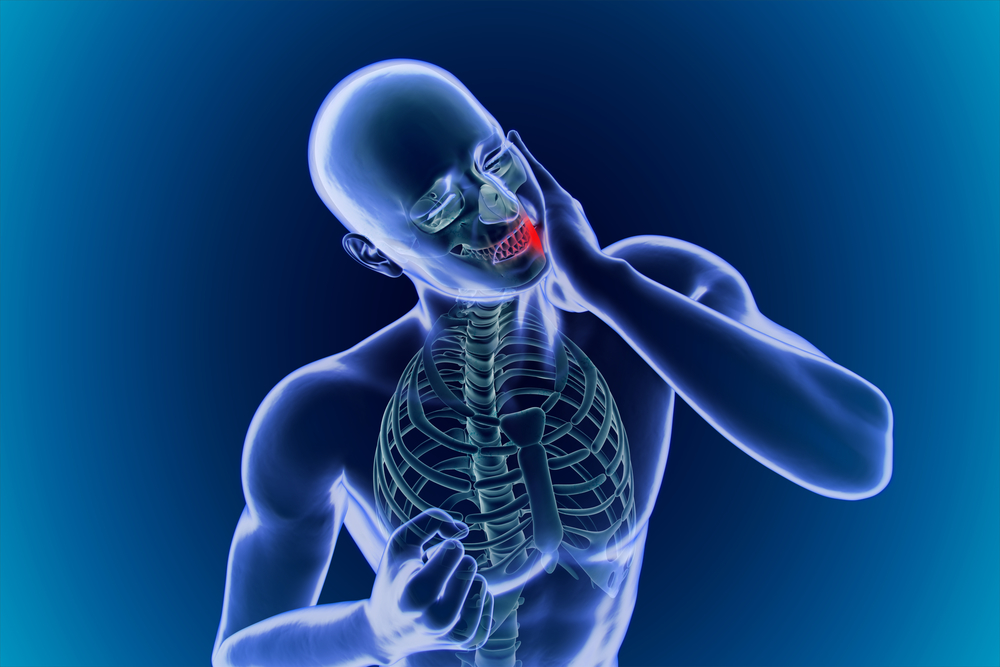“I have no trouble knowing what I want to say. The problem I often have is saying it.” – Unknown
 Our bodies are both incredibly versatile, yet limited; amazingly resilient, yet fragile. Think about how quickly you can recover from a blow by someone’s elbow or fist, yet how badly a simple paper cut can hurt for days.
Our bodies are both incredibly versatile, yet limited; amazingly resilient, yet fragile. Think about how quickly you can recover from a blow by someone’s elbow or fist, yet how badly a simple paper cut can hurt for days.
Consequently, many people who are not physically debilitated in some way, or experiencing age-related issues, can still suffer from any number of joint or muscle pains. And this can include a condition known as temporomandibular disorder or TMD. This is a fairly common affliction that can cause pain in the jaw joint and in the muscles that control jaw movement.
TMJ Disorders and Their Symptoms
What are the symptoms of temporomandibular disorder or TMD?
The temporomandibular joints, or TMJs, are located on each side of your jaw just below your ears. These joints function like sliding hinges that enable you to move your jaw up and down, and side to side, which allows you to talk, chew and yawn. In addition, these joints serve to connect your entire jawbone to your skull.
However, these joint areas can develop pain and discomfort that can either be intermittent or, in some instances, constant. According to the Mayo Clinic, in most cases, the pain is a result of muscle soreness and not damage to the joint itself. Usually, this is pain that can be treated with self-care using over-the-counter pain relievers and rest.
However, if the pain continues, that is when you may need to have the condition evaluated.
Problems with temporomandibular joints can present several symptoms that are either constant, or only manifest with motion, when eating, or simply opening and closing your mouth. Here are some of the most common symptoms of TMJ disorders:
- Pain in the jaw, face or neck
- Headaches or ear pain
- Difficulty chewing
- Jaw locking, clicking or popping
- Localized stiffness in the joint areas
Again, your health care professional can evaluate and assess your condition to determine the cause of symptoms. Experience has shown that most TMD symptoms can be minimized and usually resolved with simple and non-surgical treatment.
Causes of TMD
Some of the most commonly known causes of TMJ pain is the result of teeth grinding or clenching. If the cause of your TMJ pain is indeed a result of teeth grinding, there are steps you can take to reduce this and your doctor can help with the treatment options.
While teeth grinding and clenching, induced by stress, are common causes, there are other reasons for TMD. It can be caused by unusual movement of the soft cushion or disc between the ball and socket of the joint, poor posture, general stress, arthritis, and even gum chewing!
In some cases, the joints may suffer from actual damage. When this joint is injured or damaged, it can lead to a localized pain disorder sometimes referred to as temporomandibular joint (TMJ) syndrome. In addition to an injured or damaged joint, misalignment of the teeth or jaw can also cause pain.
In rare instances, one or both TMJs can become dislocated, which is painful and can cause additional problems for the sufferer. However, by far the most common culprit for TMJ pain and discomfort is jaw clenching or teeth grinding, often brought on by stress.
TMD and Treating Your Condition
If the source of the TMJ pain is undetermined, or treatments for clenching or grinding are not bringing relief from the pain, you also may want to explore other treatment options for the pain, such as prescription medication or physical therapy.
Another option to consider is offered here at Pain and Performance Solutions. We have seen great results from treating TMJ disorders using Active Release Technique®. This is a deep tissue therapy technique that is primarily used to break up adhesions and scar tissue on the surrounding muscle and ligaments. However, this technique has been proven to be a very effective method for treating TMD.
While there are several muscles connected with the movement of the TMJ, it is thought that the major players are the digastricus, masseter, and lateral pterygoid muscles. The primary function of the digastricus is to help your mouth open, while the masseter muscle closes your mouth with the help of the medial pterygoid and temporalis muscles.
The function of the third major TMJ-related muscle, the lateral pterygoid, is to bilaterally stabilize the TMJ. In many instances, using Active Release Technique® to provide manual treatments is effective for relaxation, facilitation, and mobilization of these muscles and has been successful in relieving TMJ pain.
Pain and Performance Solutions for Your TMJ Pain
We can help you find the answer to your pain. By setting up your first appointment with us, you can begin to start by you telling us when you first became aware of the pain. This information is critical and something we’ll explain when you come in. Don’t simply ignore your joint and muscle pain hoping it will just go away. Let us help.
Contact us today at 707-636-4404 or book an appointment online to start your recovery process.